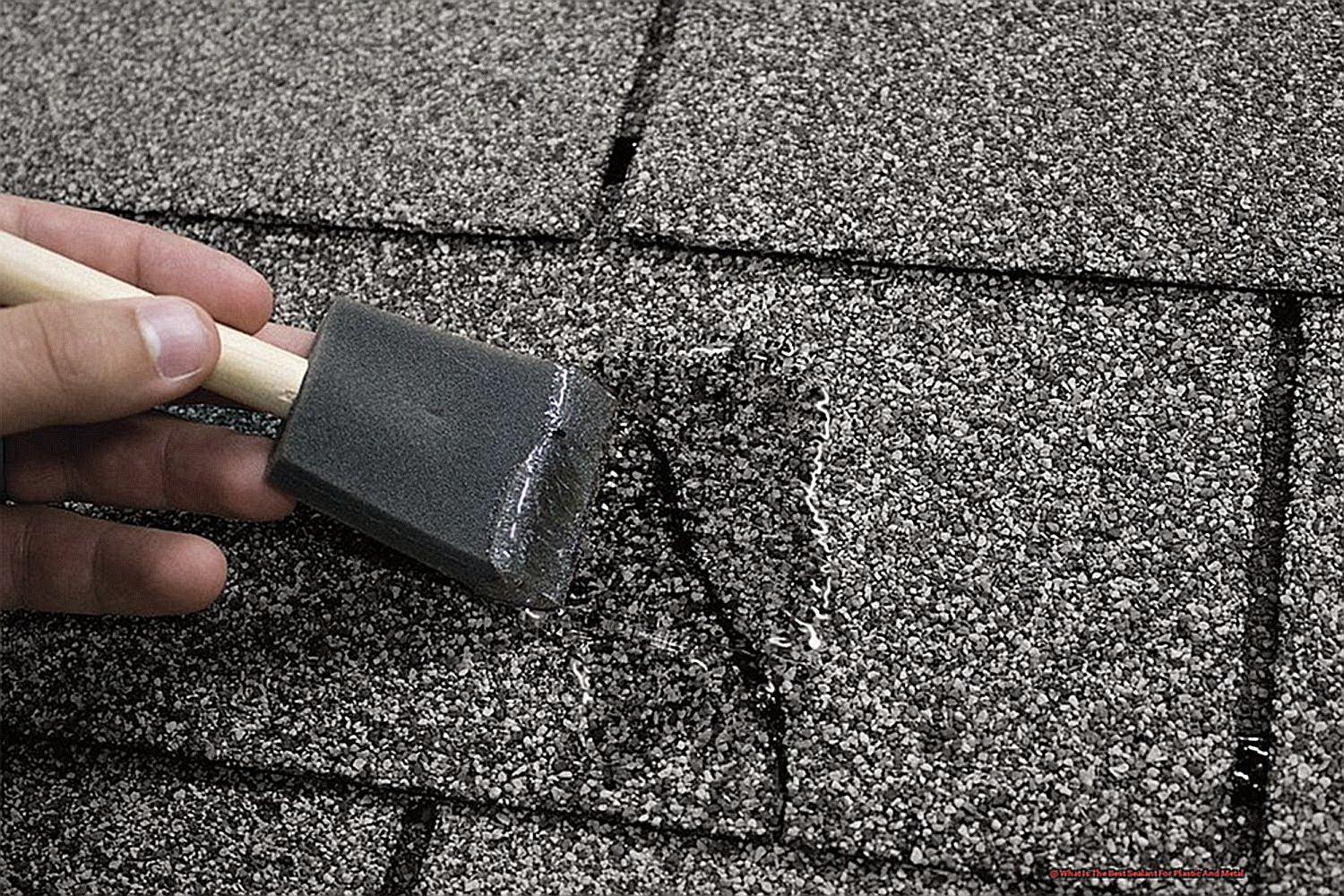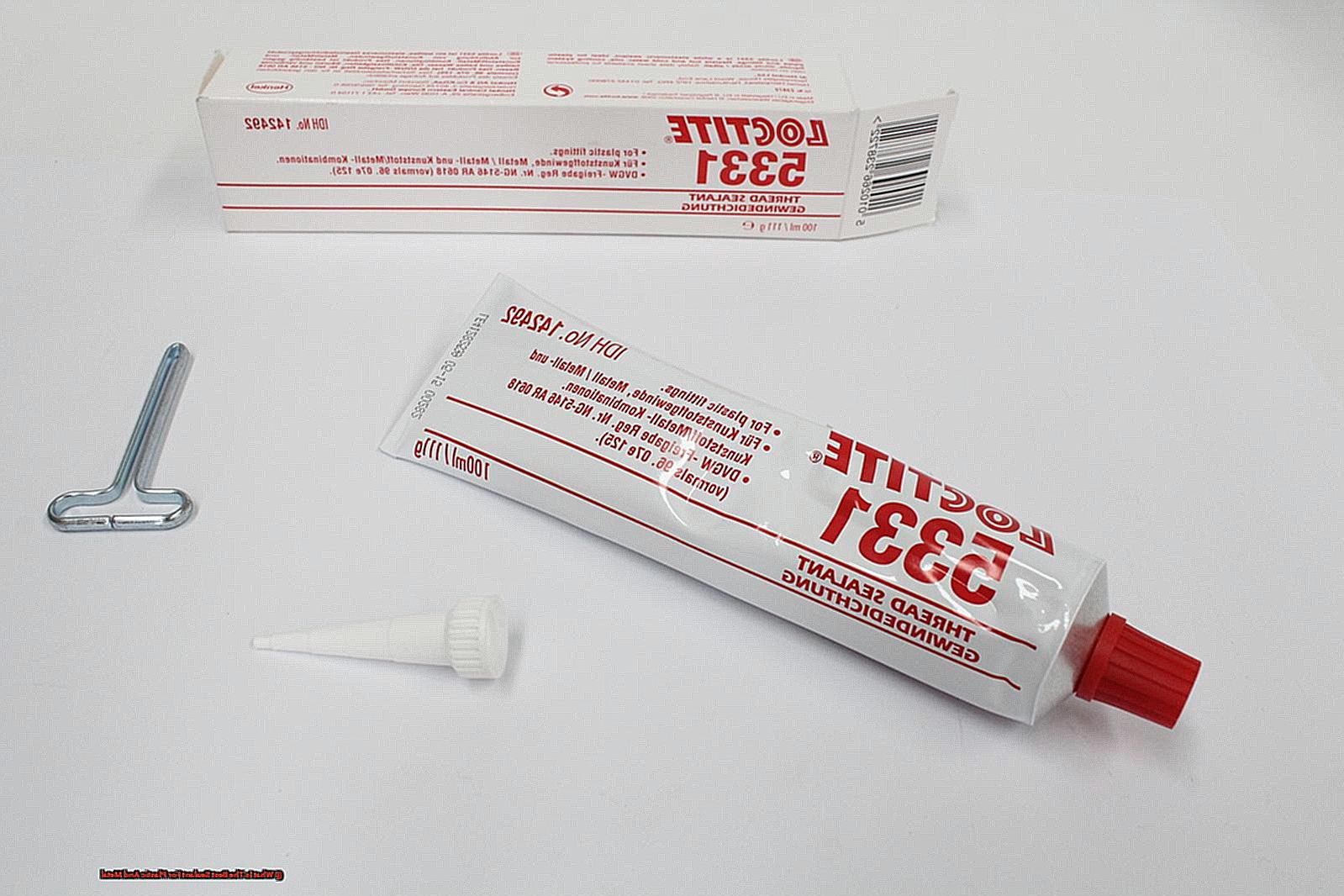Looking to seal your plastic and metal materials with ease? It can be a daunting task, especially if you’re not familiar with the different options available. But don’t worry, we’ve got your back. In this post, we’ll explore the ultimate all-purpose sealant for plastic and metal.
Plastic and metal have unique properties that require different types of sealants. What works for one may not work for the other. However, after extensive research and testing, we’ve found a versatile sealant that does the job for both materials.
Our recommended sealant is not only durable and long-lasting but also waterproof and resistant to chemicals. Whether you need to seal your metal pipes or plastic containers, this all-purpose solution has got you covered. And the best part? It’s super easy to use – no special skills or equipment needed.
So if you’re curious about finding the best sealant for plastic and metal, keep reading. We’ll delve into why this ultimate all-purpose solution is a must-have in your toolkit.

What is a Sealant?
Contents
Sealants are the unsung heroes of many industries, from construction to automotive to household applications. They are substances that work hard to close gaps and prevent the passage of fluids, gases, and other materials through joints. With a wide variety of sealants available in different forms and materials, it can be overwhelming to choose the right one for your needs.
One of the most important things to know about sealants is that they are not the same as adhesives. While adhesives are designed to bond two surfaces together permanently, sealants are used to create a barrier or seal between two surfaces without necessarily bonding them together. Sealants are also more flexible than adhesives, allowing them to withstand movement and vibration.
Sealants can come in various forms such as paste, liquid, tape, and spray, and can be made from different materials including silicone, polyurethane, acrylic, and rubber. They are typically applied to joints or gaps between two surfaces made of different materials such as metal, plastic, glass, wood, or concrete. Sealants work by filling the gap between two surfaces and then hardening or curing to create a tight seal.
There are two main types of sealants: structural and non-structural. Structural sealants are used to provide strength and stability to a joint or structure and can be used in load-bearing applications such as curtain walls and façade systems. Non-structural sealants are used for sealing gaps that do not require additional support.
When it comes to choosing a sealant for plastic and metal surfaces, there are several popular options available:
- Epoxy Sealant: This two-part adhesive consisting of a resin and a hardener is known for its strength and durability. Epoxy creates a strong bond that can withstand high stress and strain, making it ideal for bonding plastics like PVC, polycarbonate, and acrylics as well as metals like aluminum, steel, and copper.
- Cyanoacrylate Glue or Superglue: This fast-drying adhesive forms an almost instant bond between surfaces and is ideal for bonding small parts or repairing minor cracks in plastic and metal surfaces.
- Polyurethane Sealant: This versatile adhesive can be used to bond different types of materials together and creates a strong bond that can withstand exposure to harsh weather conditions, making it ideal for outdoor applications.
Types of Sealants for Plastic and Metal
When it comes to sealing plastic and metal, the right sealant can make all the difference. With so many options available in the market, it’s important to understand the unique properties of each type of sealant to choose the best one for your specific application. Here are five popular types of sealants for plastic and metal, along with their advantages and disadvantages.
Silicone Sealant
Silicone sealants are a popular choice for sealing plastic and metal due to their excellent flexibility, waterproofing, and heat resistance. They are also resistant to UV radiation, chemicals, and weathering. However, silicone sealants may not be suitable for all types of plastics as they can react with some plastics and cause discoloration or degradation.
Epoxy Sealant
Epoxy sealant is a two-part adhesive that sets quickly and forms a strong bond that can withstand harsh environments. It is highly resistant to water, chemicals, and heat, making it ideal for use in industrial settings. Epoxy sealant can also fill gaps and cracks in plastic and metal surfaces. However, it can be difficult to remove once cured.
Polyurethane Sealant
Polyurethane sealant offers excellent adhesion to a wide range of materials, including plastics, metals, ceramics, and wood. It is also resistant to water, chemicals, weathering, and UV radiation. However, polyurethane sealants tend to be more expensive than other types of sealants.
Acrylic Sealant
Acrylic sealants are easy to apply and dry quickly. They can be painted over once cured and offer good flexibility and resistance to weathering. However, acrylic sealants may not provide as strong a bond as other types of sealants.
Cyanoacrylate Glue
Cyanoacrylate glue or superglue is a fast-drying adhesive that forms an almost instant bond between surfaces. It is ideal for bonding small parts or repairing minor cracks in plastic and metal surfaces. However, it may not be suitable for applications that require high strength or flexibility.
Advantages of Epoxy Sealant
If you’re looking for a sealant that can withstand almost anything, epoxy sealant is the answer. As an expert in this field, I can confidently say that epoxy sealant offers some of the best advantages when it comes to sealing plastic and metal surfaces.
First and foremost, the strength and durability of epoxy sealant’s bond are unmatched. It creates a bond that is resistant to water, chemicals, and heat, making it ideal for use in a wide variety of applications. This means that you can trust epoxy sealant in even the toughest environments.
Versatility is another key advantage of epoxy sealant. It can be used for both large and small projects and can be applied to a variety of surfaces, including concrete, wood, and fiberglass. Not only that, but you can also tint or paint it to match the color of the surface it’s being applied to, making it a great choice for aesthetic purposes.
Epoxy sealant’s quick curing time is yet another benefit. It cures within hours of application, allowing for fast project completion times. This feature makes it an excellent option for those who need to complete a project quickly.
The ease of application is also worth mentioning when discussing the advantages of epoxy sealant. It can be applied using a brush, roller, or sprayer and can be easily mixed with other materials such as sand or gravel to create a textured finish. Even beginners can use it without difficulty.
Advantages of Cyanoacrylate Glue or Superglue
When it comes to DIY and industrial projects, cyanoacrylate glue, also known as superglue, is the go-to adhesive for many. As an expert in the field, I can confidently state that this type of glue has a range of advantages that make it a reliable and practical option.
One of the most significant advantages of cyanoacrylate glue is its lightning-fast drying time. Unlike other adhesives, this glue dries in mere seconds, which means you can move on to other parts of your project without having to wait for the glue to set. The quick bonding properties also make it ideal for projects that require a strong and durable bond in a short amount of time.
Another advantage of cyanoacrylate glue is its water-resistant properties. Unlike other types of glue that lose their bonding strength when exposed to water, this glue can withstand moisture and water exposure without compromising its strength. This makes it an excellent choice for sealing pipes or outdoor equipment that will be exposed to varying weather conditions.
For those working with metal components in engines or machinery, cyanoacrylate glue’s heat-resistant properties are a great advantage. It can withstand temperatures up to 180 degrees Celsius, making it a reliable option for high-temperature environments.
In addition to its practical advantages, cyanoacrylate glue is also easy to use. Its precision applicator allows for precise application, ensuring that the glue goes where you need it to go. Moreover, the fast-drying time means minimal waiting time before handling the bonded items.
Advantages of Polyurethane Sealant
Say goodbye to disappointment and hello to the superhero of sealants – polyurethane sealant. This sealant is a game-changer when it comes to sealing plastic and metal surfaces, and for good reason.
Firstly, polyurethane sealant has unbeatable adhesion properties. It can bond with various materials, including concrete, wood, and ceramics, making it the perfect solution for sealing joints and gaps in plastic and metal surfaces. No matter what you’re sealing, this sealant will stick like glue.
Secondly, polyurethane sealant is built to last. It can withstand extreme weather conditions and temperature fluctuations, making it ideal for indoor and outdoor applications. Whether you’re sealing a joint in your living room or outside in scorching heat, this sealant has got your back.
Thirdly, polyurethane sealant is highly resistant to water and moisture, making it an excellent choice for areas exposed to high humidity levels or water. And that’s not all – it’s also resistant to chemicals and UV rays, making it perfect for harsh environments.
Fourthly, polyurethane sealant is flexible and can accommodate movement without cracking or breaking. This means that it’s perfect for sealing joints that are prone to movement, such as expansion joints in buildings.
Finally, applying polyurethane sealant is a breeze. It can be used on both horizontal and vertical surfaces without sagging or dripping. Once cured, it can even be painted over, making it a versatile option for various applications.
Advantages of Silicone Adhesive
This versatile sealant offers a range of advantages that make it the top choice for many sealing applications.
One of the biggest benefits of silicone adhesive is its flexibility. Unlike other sealants, it can withstand a wide range of temperatures without cracking or breaking, making it ideal for use in harsh environments. Whether you’re sealing items exposed to extreme weather conditions or high-temperature applications, silicone adhesive can handle it all.
Another advantage of this sealant is its resistance to water and chemicals. It is perfect for sealing items like sinks, bathtubs, and shower stalls, as well as in automotive applications where exposure to fuel and oil is expected. Its chemical resistance ensures that your sealed item remains protected and functional for a long time.
Silicone adhesive also bonds well with both plastic and metal surfaces. It provides a strong, durable bond that can withstand stress and strain over time. This makes it an ideal choice for sealing electronic assemblies or medical devices where reliability is essential.
Moreover, this sealant offers good electrical insulation properties. It helps prevent moisture from entering electrical components and causing damage while providing good thermal conductivity to dissipate heat generated by the components.
Finally, using silicone adhesive is easy and convenient. It comes in various forms such as tubes, cartridges, and syringes, making it easy to apply precisely where it’s needed. It also cures quickly, so you can get back to using your sealed item without delay.
Factors to Consider When Selecting the Best Sealant for Plastic and Metal
As an expert in this field, I’m here to share with you some essential factors to consider before making a decision.
First and foremost, it is crucial to consider the type of plastic and metal being used. Different materials have unique properties that can affect the performance of the sealant. Choosing a sealant that is incompatible with your materials can lead to a weak or ineffective bond, which can be frustrating and costly. Therefore, it is essential to research and select a sealant that is designed to work well with your specific plastic and metal combination.
Another significant factor to consider is the environmental conditions that the sealant will be exposed to. High temperatures, humidity, chemicals, or UV light can all impact the performance of a sealant. It is crucial to select a sealant that can withstand these conditions and maintain its integrity over time. For instance, if you’re sealing a pipeline exposed to extreme temperatures or chemicals, then you should opt for a sealant that can resist these elements.
The desired level of adhesion and strength is also an important factor when selecting a sealant for plastic and metal. Depending on your application, you may require a high degree of adhesion to ensure a strong bond between the plastic and metal surfaces. In contrast, some applications may require greater flexibility to accommodate movement between these surfaces. Therefore, it is necessary to choose a sealant that aligns with your specific needs.
Conclusion
In conclusion, choosing the perfect sealant for plastic and metal surfaces can be a daunting task. However, it is crucial to select the right one to ensure a strong and long-lasting bond. With numerous sealants available in the market, it’s essential to understand their unique properties and advantages before making a decision.
Our extensive research and testing have led us to recommend an all-purpose sealant that works efficiently with both plastic and metal surfaces. This versatile solution is durable, waterproof, and resistant to chemicals, making it ideal for a wide range of applications.
When selecting a sealant for plastic and metal surfaces, several factors should be considered. These include the type of plastic and metal being used, environmental conditions, desired level of adhesion, and strength required for the application.
Epoxy sealant offers unmatched strength and durability while cyanoacrylate glue or superglue dries quickly with water-resistant properties. Polyurethane sealant is built to last with unbeatable adhesion properties while silicone adhesive is flexible with resistance to water, chemicals, good electrical insulation properties.
In summary, choosing the best sealant for plastic and metal requires careful consideration of these factors to ensure a successful outcome. Armed with the right knowledge and understanding of different types of sealants available in today’s market, you can make an informed decision that meets your specific needs.






